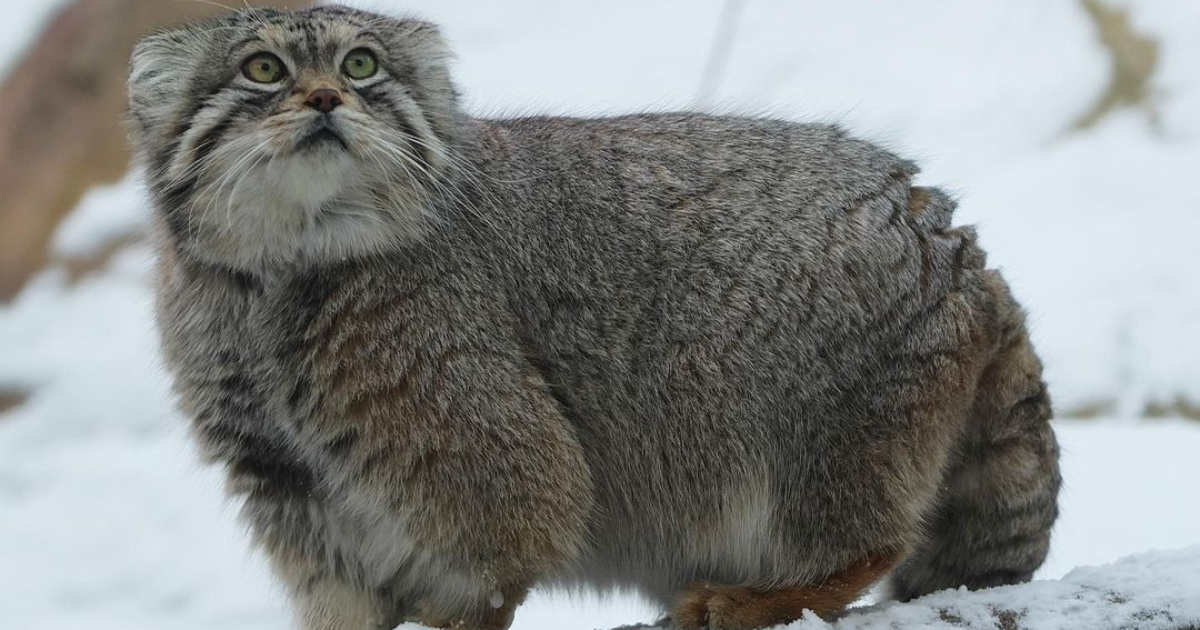Manula or Pallas’s cat was found for the first time on Everest: what kind of predator is this

On Mount Everest in the Himalayas, the manula or Pallas’s cat was discovered for the first time – an almost elusive furry predator that lives in Central and East Asia. Scientists have found evidence of manula living in Nepal’s Sagarmatha National Park, home to the world’s highest peak, Jomolungma, or Everest, the Wildlife Conservation Society and National Geographic reported. The groundbreaking discovery was the result of the 2019 National Geographic and Rolex Perpetual Planet Everest expedition, the most complete single scientific expedition to the mountain ever, scientists reported in Cat News magazine. Scientists already know that the manul or Pallas’s cat lives in Asia – from Western Iran to Mongolia, from Tibet to Siberia. Now we know that manulas also live on the slopes of Jomolungma. Manul or the cat of Pallas. Photo: haru_manul/Instagram “These findings extend the range of manul to eastern Nepal and add a new species to the list of known mammals in Sagarmatha National Park,” the article says. Manul is a very fluffy and mysterious predator who is often called “grumpy cat” in social networks because of his serious round face. “UP. Life” collected interesting facts about the Pallas cat. Photo: Otgonbayar Baatargal @steppewildlife From April 7 to May 2, 2019, Dr. Tracy Simon of the Wildlife Conservation Society’s Zoological Health Program led the Perpetual Planet Everest Expedition research team. Scientists collected environmental samples from two locations in Sagarmatha National Park on the southern slope of Mount Everest. The samples were taken at an altitude of 5110 and 5190 meters above sea level at a distance of 6 km from each other. Photo: Wendy Salisbury/Flickr “It’s phenomenal to discover evidence of this rare and beautiful species at the top of the world. The nearly four-week journey was extremely rewarding not only for our team but also for the wider scientific community. The discovery of the manula on Everest demonstrates the rich biodiversity of this remote high mountain ecosystem and expands the range of this species to eastern Nepal,” says Simon. DNA analysis of the droppings confirmed that two manulas live on Everest and interbreed with the red fox in this area. The researchers also found traces of the DNA of the pisukha and the mountain weasel, which the manul hunts. Photo: haru_manul/Instagram The number of tourists visiting Sagarmatha National Park and Mount Everest has increased dramatically in recent years, from just a few thousand in the 1970s to over fifty thousand in 2019. At the same time, Pallas’s cat remained unnoticed in this park until 2019. “This is a unique discovery not only from a scientific point of view, but also from a conservation point of view, as this population of Pallas’s cat is legally protected by CITES (Convention on International Trade in Endangered Species of Wild Fauna and Flora). We hope that the confirmation of this new species will increase awareness of the diversity of species at this iconic World Heritage Site,” said National Geographic researcher and co-author of the article Anton Seymon. Photo: DennisJacobsen/Depositphotos Read also: Why does a cat trample and knead you with its paws? Scientists know the answer Who is Manul? Photo: haru_manul/Instagram Manul (Felis manul) or Pallas’s cat is a small long-haired cat (family Felidae) that lives in deserts and rocky mountain areas. The predator was named after naturalist Peter Simon Pallas, who first described the species in 1776. Manul is found in Central Asia, from the Caspian Sea region through western Iran, Afghanistan, Pakistan and northern India to central China, Mongolia and Siberia. Currently, the largest population of manuls lives in Mongolia, and China accounts for about half of the area of this cat’s range. Manul populations in Afghanistan and Pakistan are isolated and small. Manulas also live in many zoos. Photo: PICA Manul is a mysterious cat that is rarely seen, writes the organization Pallas’s cat International Conservation Alliance (PICA). It has long and soft silver-gray or light brown fur, which allows it to camouflage well under snow or rocks. Flat ears planted on the sides also help the manula to be inconspicuous. “Pallas’s cat is characterized by a broad head with high-set eyes and low-set ears. There is an assumption that the location of these body parts is an adaptation for viewing rocky ledges,” writes PICA. Photo: steppewildlife/Instagram Short legs and thick fur give the manula a stocky appearance, although it is not very large: the length of the head and body varies from 45 to 60 centimeters, and the tail – 23-30 cm. Manulas have characteristic black spots on the forehead and round pupils, unlike most small cats. A very fluffy tail and fur protect the manula from the cold – in some photos and videos you can see how the cat covers its paws with its tail. Pallas’s cat weighs like a small domestic cat – from 2.5 to 3.5 kilograms. It hunts small rodents and birds. It is most active at dawn and in the evening. Photo: bhamzoo/Instagram Whether manulas meow like cats is not known for sure, because it is very difficult to record the sounds of a predator in the wild. But recent captive studies have found that manulas become vocal during the breeding season – the Pallas’s cat International Conservation Alliance shared an audio recording. “They have a range of vocalizations from typical cat hisses and growls to a more unusual cry used during the breeding season. These unique and elusive cats most likely use this call to attract other males before mating,” the animal welfare organization says. Photo: Otgonbayar Baatargal @steppewildlife Manuls are called “angry”, but there are many Instagram accounts for fans of these furry predators. Also, memes are made about manuls, in particular about their fluffiness and fullness. Photo: Quickmeme Read also: How people domesticated cats: interesting facts from the history of our pets
Original Source Link











